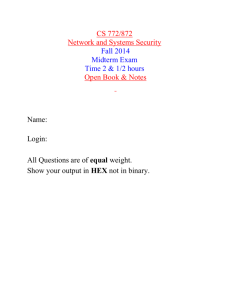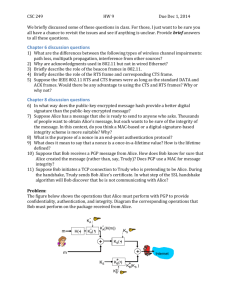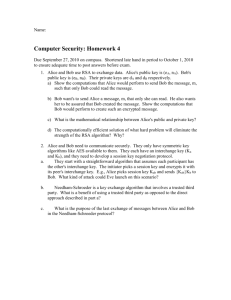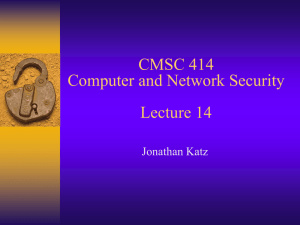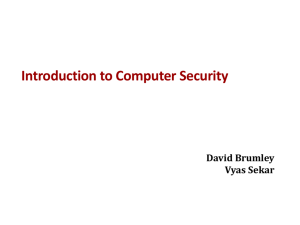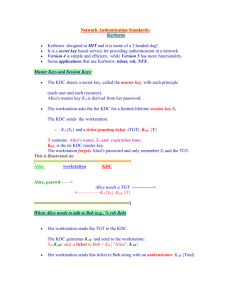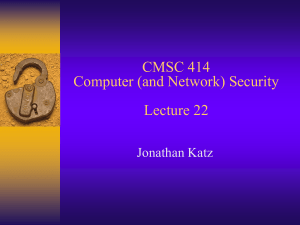Homework 1
advertisement
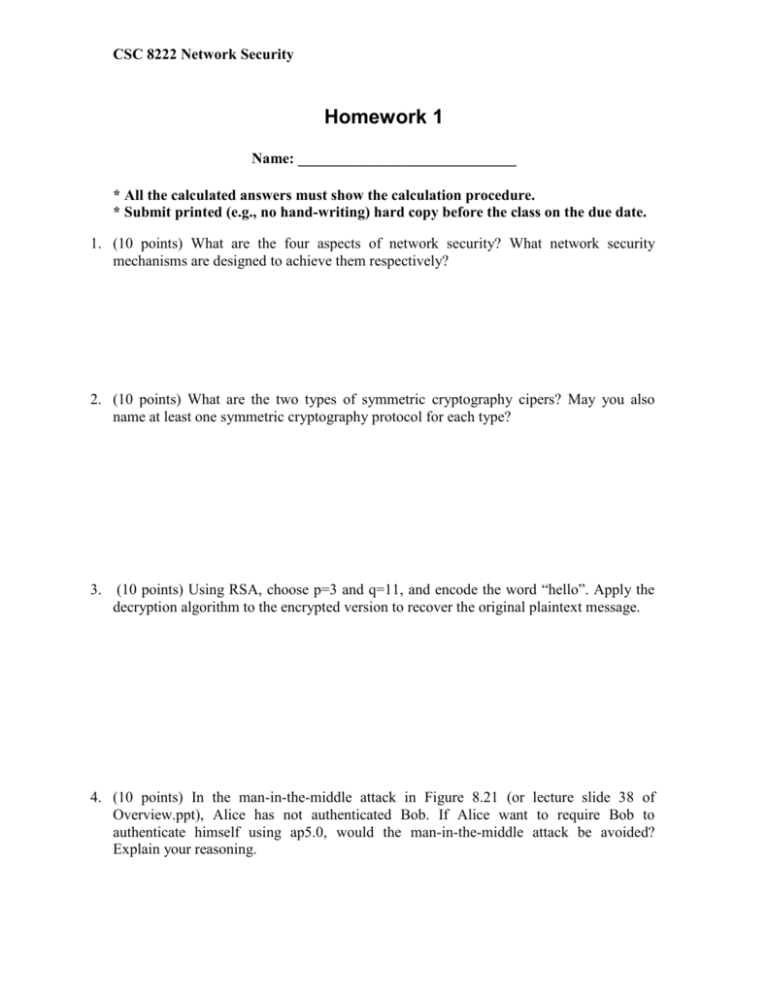
CSC 8222 Network Security Homework 1 Name: _____________________________ * All the calculated answers must show the calculation procedure. * Submit printed (e.g., no hand-writing) hard copy before the class on the due date. 1. (10 points) What are the four aspects of network security? What network security mechanisms are designed to achieve them respectively? 2. (10 points) What are the two types of symmetric cryptography cipers? May you also name at least one symmetric cryptography protocol for each type? 3. (10 points) Using RSA, choose p=3 and q=11, and encode the word “hello”. Apply the decryption algorithm to the encrypted version to recover the original plaintext message. 4. (10 points) In the man-in-the-middle attack in Figure 8.21 (or lecture slide 38 of Overview.ppt), Alice has not authenticated Bob. If Alice want to require Bob to authenticate himself using ap5.0, would the man-in-the-middle attack be avoided? Explain your reasoning. CSC 8222 Network Security 5. (10 points) Suppose Alice wants to communicate with Bob using symmetric key cryptography using a session key KS. In the lecture we learned how public-key cryptography can be used to distribute the session key from Alice to Bob. In this problem, we explore how the session key can be distributed—without public key cryptography using a key distribution center (KDC). The KDC is a server that shares a unique secret symmetric key with each registered user. For Alice and Bob, denote these keys by KA_KDC and KB_KDC. Design a scheme that uses the KDC to distribute KS to Alice and Bob. Your scheme should use three messages to distribute the session key: a message from Alice to the KDC; a message from the KDC to Alice; and finally a message from Alice to Bob. 6. (10 points) Alice sends a secure email to Bob with the mechanism in the following diagram. Please illustrate how Bob can decode the message, verify that it is truly from Alice. In other words, please draw the right side of the diagram. CSC 8222 Network Security 7. (10 points) Describe a security hole in 802.11 WEP protocol.

